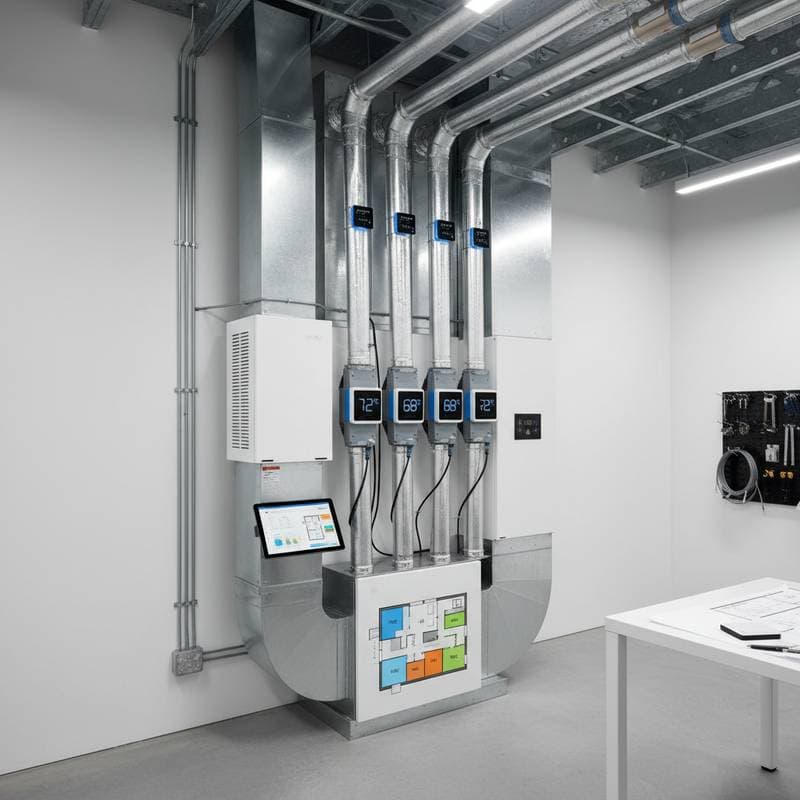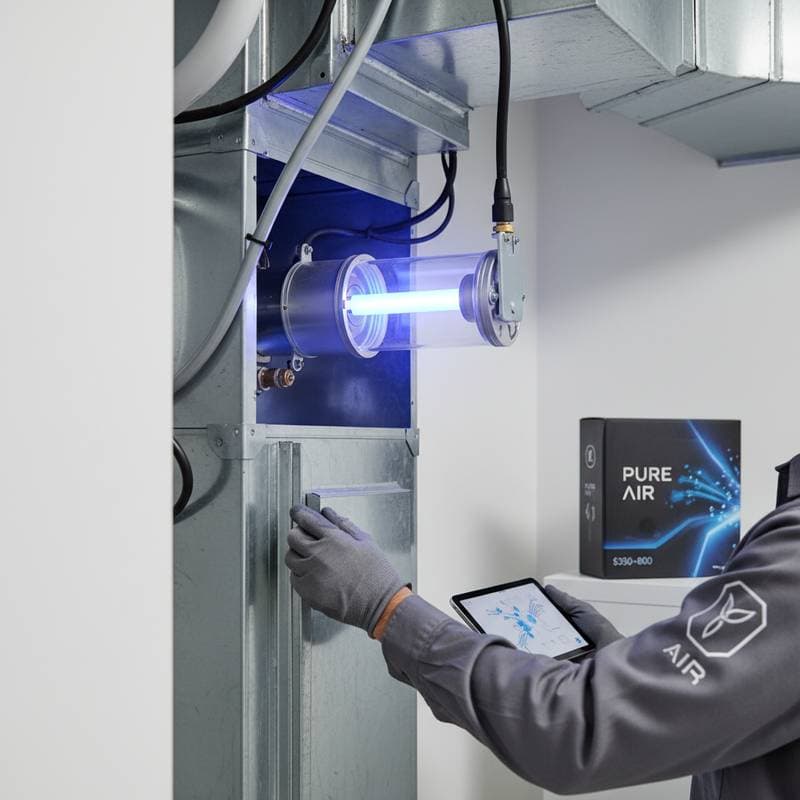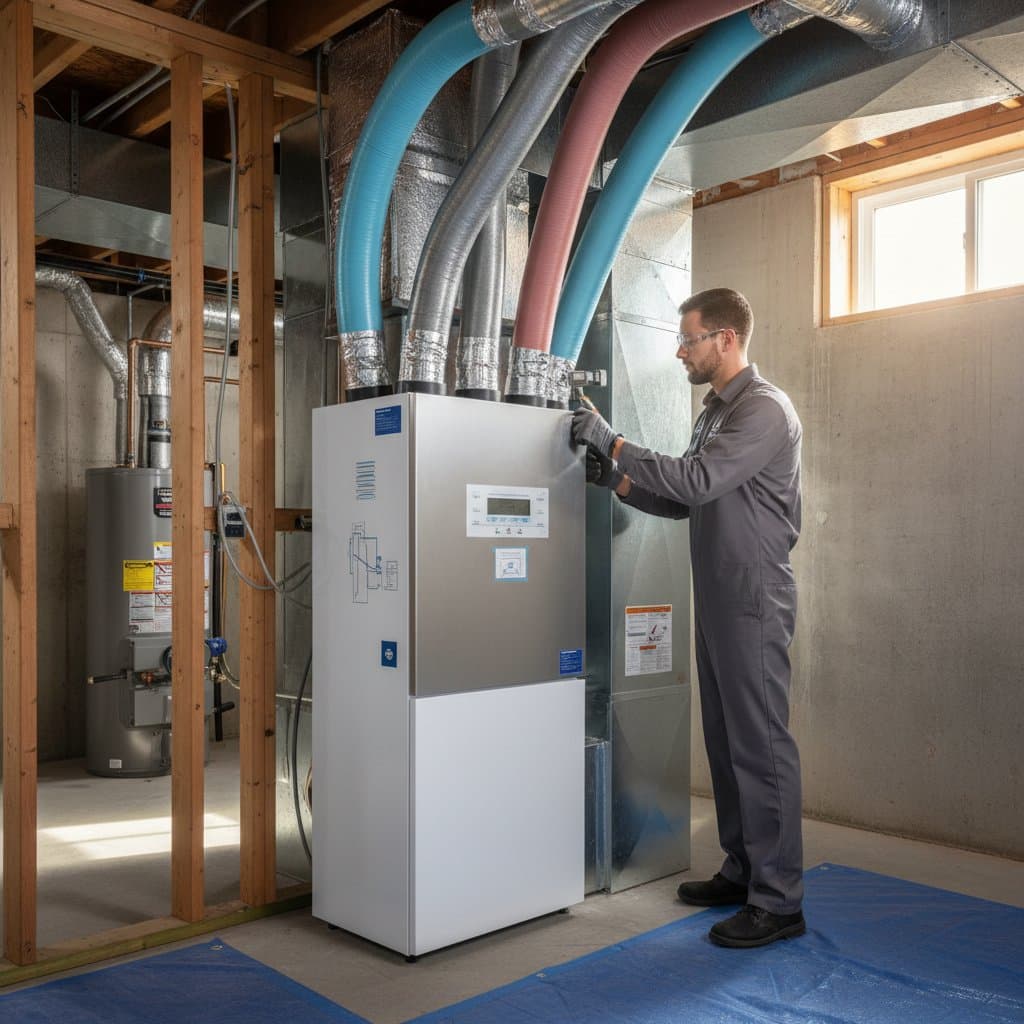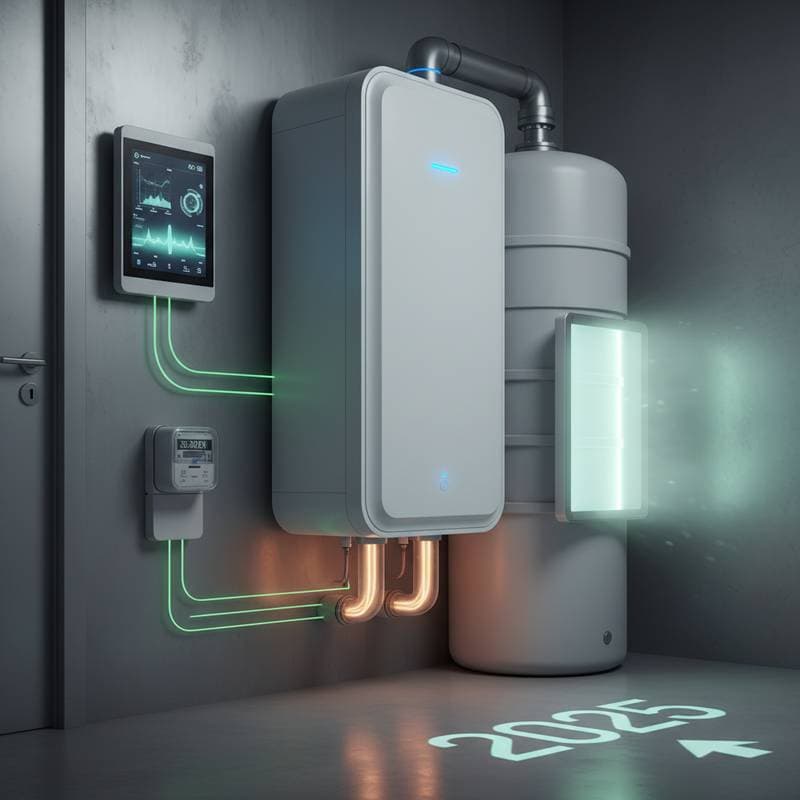Understanding Dual-Fuel HVAC Systems and Their 35 Percent Savings Potential
Winter heating expenses challenge many homeowners as temperatures plummet. Traditional systems often lead to high energy use and discomfort. Dual-fuel HVAC systems address these issues by integrating electric and gas heating for superior efficiency. Homeowners achieve reductions in winter bills of up to 35 percent compared to conventional setups. This guide details system mechanics, pricing, influencing factors, and optimization strategies.
Defining Dual-Fuel HVAC Systems
Dual-fuel HVAC systems merge a heat pump with a gas or propane furnace. The heat pump operates on electricity to extract warmth from outdoor air during moderate conditions. The furnace activates in extreme cold when the heat pump efficiency declines. This combination delivers consistent indoor temperatures while minimizing energy consumption.
Operational Mechanics of Dual-Fuel Systems
Intelligent controls monitor outdoor temperatures and automatically select the optimal heating source. In milder weather, the heat pump transfers heat indoors using low electricity levels. When conditions worsen, the system shifts to the furnace for robust performance. Such transitions prevent energy overuse and ensure reliable comfort throughout the season.
Installation Costs for Dual-Fuel HVAC Systems
Dual-fuel HVAC installation costs range from $6,500 to $13,000, influenced by system capacity, brand quality, and site-specific requirements. Although initial expenses exceed those of single-fuel options, energy savings recover the investment quickly. Homeowners recoup costs within three to five years through reduced utility payments.
| System Type | Average Installed Cost | Key Details |
|---|---|---|
| Basic Dual-Fuel System | $6,500 – $8,000 | Standard efficiency heat pump paired with a gas furnace |
| Mid-Range System | $8,000 – $10,500 | Enhanced efficiency, advanced controls, and reduced noise levels |
| Premium System | $10,500 – $13,000 | Variable-speed technology, smart thermostats, and premium brand components |
These figures encompass equipment, professional labor, and standard duct modifications. Additional expenses arise for new ductwork, electrical upgrades, or multi-zone configurations.
Cost Variations by Home Size
System pricing correlates with home square footage and required capacity.
| Home Size (sq. ft.) | Typical System Size (tons) | Estimated Cost |
|---|---|---|
| Up to 1,500 | 2 – 2.5 | $6,500 – $8,500 |
| 1,500 – 2,500 | 3 – 4 | $8,500 – $10,000 |
| 2,500+ | 4 – 5 | $10,000 – $13,000 |
Oversized or undersized units compromise efficiency and comfort. Professional load calculations ensure precise sizing tailored to home layout and insulation.
Key Factors Affecting Dual-Fuel HVAC Costs
Multiple variables determine both upfront and ongoing expenses for dual-fuel systems.
Equipment Efficiency Ratings
Heat pumps feature SEER ratings, while furnaces display AFUE values. Systems with SEER above 16 and AFUE exceeding 95 percent operate more economically. Select higher-rated models for greater long-term returns despite elevated initial prices.
Labor and Installation Complexity
Regional labor rates and contractor expertise impact costs. Retrofitting older homes often involves electrical enhancements or venting revisions, adding $1,000 to $3,000.
Brand Quality and Added Features
Reputable brands provide superior durability, quiet operation, and extended warranties up to 10 years. Options like variable-speed compressors enhance performance but increase costs by 20 to 30 percent.
Regional Climate Influences
Mild climates maximize heat pump usage, amplifying savings. Harsh winters rely more on the furnace, yet overall efficiency surpasses single-source systems. Local fuel and electricity rates further shape financial outcomes.
Available Rebates and Incentives
Utility companies and federal programs, such as those under the Inflation Reduction Act, offer rebates up to $2,000 for efficient installations. Verify eligibility through local energy offices to offset expenses significantly.
Mechanisms Behind 35 Percent Winter Heating Savings
Dual-fuel systems save energy by leveraging the heat pump for cost-effective mild-weather heating and reserving the furnace for severe cold. Conventional furnaces consume fuel relentlessly, even in suboptimal conditions. Hybrid operation cuts fuel dependency, extends equipment life, and stabilizes indoor climates.
Elements Enhancing Savings
- Integrated Smart Thermostats: These devices fine-tune switch points based on real-time data, preventing unnecessary fuel use.
- Zoning Capabilities: Direct heat to occupied areas, reducing energy loss in vacant spaces by up to 20 percent.
- Scheduled Maintenance: Annual inspections maintain optimal efficiency, avoiding breakdowns that inflate bills.
- Home Insulation Upgrades: Enhanced sealing lowers heat loss, enabling the heat pump to cover 70 to 80 percent of heating needs.
Combined, these practices yield the projected 35 percent bill reduction, with some users reporting even higher gains in balanced climates.
Frequently Asked Questions About Dual-Fuel HVAC Systems
How Long Do Dual-Fuel Systems Last?
Properly maintained dual-fuel systems endure 15 to 20 years. Heat pumps may require replacement after 10 to 15 years, while furnaces often outlast them. Regular servicing preserves performance and averts costly repairs.
What Maintenance Is Required?
Annual professional tune-ups involve coil cleaning, refrigerant checks, thermostat calibration, and burner inspections. Homeowners perform basic tasks like filter changes every one to three months to sustain efficiency.
Can Existing HVAC Systems Convert to Dual-Fuel?
Conversion proves feasible for homes with compatible furnaces. Contractors assess ductwork and electrical infrastructure to integrate a heat pump. Costs range from $4,000 to $8,000, depending on modifications needed.
Is a Dual-Fuel System a Sound Investment?
Yes, for most households in variable climates. Payback periods shorten with rising energy prices, and systems enhance home value. Calculate personal ROI using online energy calculators and local utility data.
Securing Quotes for Dual-Fuel HVAC Installation
Obtain multiple quotes from licensed contractors to compare options and pricing. Focus on NATE-certified professionals with proven hybrid system experience.
Essential Questions for Contractors
- Which brands and models suit my home size and local climate?
- How do you calculate the precise system capacity?
- What warranties cover parts and labor?
- Does my current ductwork accommodate a dual-fuel setup?
- How can I access rebates or incentives?
- What post-installation maintenance services do you provide?
- What is the expected installation timeline?
- Which smart thermostats integrate seamlessly?
- Are financing plans available for higher-cost systems?
- What annual heating bill savings should I anticipate?
Detailed responses guide informed decisions and prevent overlooked expenses.
Optimizing Hybrid Heating for Maximum Benefits
Dual-fuel HVAC systems deliver reliable warmth and substantial savings through strategic energy use. Homeowners gain year-round efficiency by pairing these installations with insulation improvements and smart controls. Invest in this technology to transform winter heating into a cost-effective, comfortable experience.





